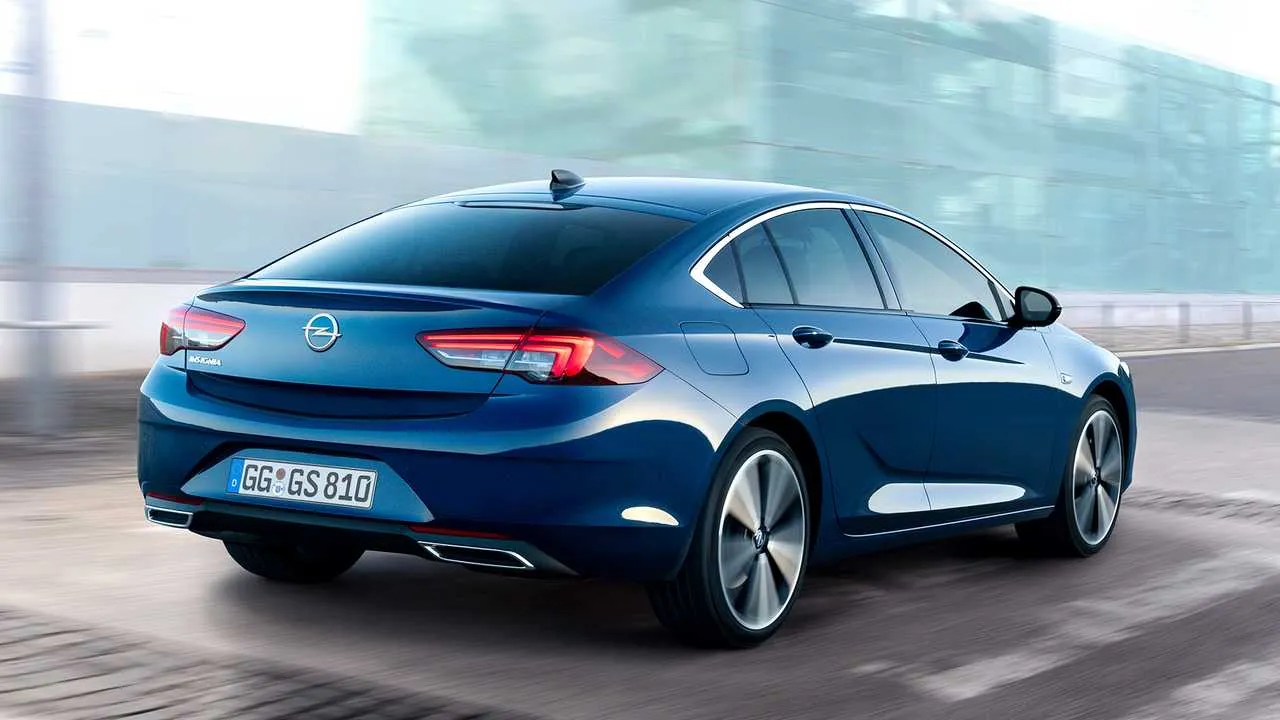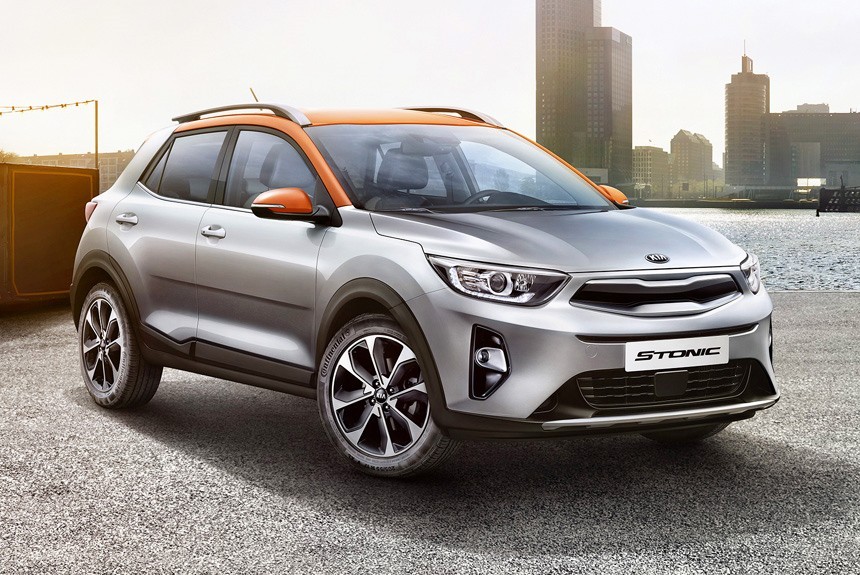
Opel Insignia - a classic in a new edition
We have been waiting for the premiere of the new Opel Insignia B for a long time. After all, the previous generation ruled the market for a good 9 years. She was a companion not only for individuals, we often saw her as a company car. A middle-class limousine with a zipper on the hood has been the hallmark of many corporations for many years. After all, the previous incarnation of one of Opel's most recognizable cars was a great car. Will the heir repeat this success?
From the outside, the new Insignia B appears to be slightly larger. The length of the second generation is 4897 mm, which is only 55 mm longer than its predecessor. Similarly, with the width: the new incarnation of the "belt" in 1863 (without mirrors), that is, "added" only 7 mm. However, the body has become lower by more than 4 centimeters, making the Insignia B look larger and sportier. The wheelbase has also been extended by 92mm (to 2829mm), the wheels are 20mm apart and both overhangs have been shortened, which not only enhances the look but also enhances the driving experience.
“Then color my world”
For testing, we received a copy in a slightly dull black, which, next to white, is the perfect calling card for a sales representative. However, interestingly, for the new Insignia, the brand has prepared a wide range of colors, including two shades of white (regular Summit and pearl Abalone), four shades of gray, two dark blue, and in addition to classic red, also a beautiful, metallic, bottle- green.
Visually, the first and second generation Insignia are two different worlds. The original was proof that simplicity is the key to success, while the new incarnation is more aggressive and visible from all angles.
Lots of changes
At the front, we see narrow, beautifully designed headlights with a double wing motif that we know from other Opel models. The grille has a more refined and optically lighter shape, making the first impression reminiscent of harmony and dynamics. The designers settled on a characteristic embossing that runs along the hood, exactly along the axis of symmetry of the car. In the second generation, it is even more pronounced than in its predecessor.
The profile of the car is still a long, elegant line, but a more pronounced sloping roof line has given the silhouette a slightly sporty expression. The only drawback is ... the door handles. What is a doorknob, everyone can see. And it's hard to reinvent them. However, on the Insignia B, both the front and rear door handles protrude significantly beyond the contour of the body. This not only spoils the visual effect when looking at the car from the outside, but also annoying from the driver's point of view. The side mirrors are neat and small, while providing sufficient visibility. However, when properly positioned, most of the field of view is obscured by door handles (especially the rear ones). There is no reasonable explanation for this. And, although I really like the new Insignia, it is these door handles that give me the impression of meeting a handsome man with ... monstrously protruding ears.
Luckily, it's hard to find fault with anything from behind. The shape of the rear lights has been completely changed, as in the front ones, by placing elongated lenses horizontally. In addition, the tailgate has an integrated spoiler that gives the Insings even more slenderness with a slight kink.
Calm interior
Thankfully, the interior of the Insignia B has been simplified compared to its predecessor. After all, the center console in the first generation of the model was heavy, rough and not very intuitive. Stepping into a new version of one of Opel's most popular cars, you can immediately see that it is calmer, but not without elegance.
The steering wheel has lost a lot of weight, making it optically lighter. Bold thumb profiles are placed in very ergonomic places, making the handlebars feel very good in your hands. The buttons, though no less, but their shape is more friendly and intuitive. However, to change to a radio station, you need to remove your right hand from the steering wheel. Unless someone has an unnaturally long thumb - the buttons are located quite close to the axis of the steering wheel.
The hours have also changed. The former combinations of a central digital speedometer with an analog "half" of the tachometer were replaced with a pure classic - two round analog clocks, between which a 3,5-inch on-board computer screen was placed. It is neat, clean and transparent. Relax. This concept perhaps best describes the change in character of the interior of the new Insignia.
The command center has also been greatly simplified. The console is slightly driver-oriented, leaving a 7-inch screen at the top with a simple and intuitive interface familiar from Opel. Thankfully, the existing tangle of mini-buttons has been replaced with just a few large media buttons and a very simple dual-zone air conditioner control panel.
Black and white
The interior is designed in contrasting colors. The dark instrument panel and upper door trim harmonize well with the light beige fabric upholstery. The dark elements are made of soft material with a specific texture, reminiscent of slightly rubberized leather. In places where, for example, we rest with our elbows, you can find soft, pleasant to the touch materials. However, in the rest of the parts we can find typical plastic. You can also feel a breath of fresh air on a rather high central tunnel, which is finished in piano black. I must admit that it looks quite elegant and, surprisingly, there are practically no fingerprints on it.
Compared to the Insignia A, the position of the front seats is lowered by 3 centimeters, which is quite easy to feel. The seats are trimmed with lightweight fabric upholstery that provides very decent lateral support. In addition, they have a long enough seat, which will certainly appeal to tall people. However, they are quite narrow, which can bother people with large dimensions. The disadvantage of the seats is the strongly retracted lumbar section, which, despite its adjustment of the position in the up and down plane, is difficult to position in a comfortable position. Another thing is the unpleasantly hard headrest. In the case of dynamic movement, the passenger may get the impression that he hits the back of his head against a wall covered with material.
The rear seat offers even more space than the first generation Insignia, where spaciousness was a strong point in the second row of seats anyway. However, tall people may complain about the rather low roofline. Due to the lowering of the rear seat, the problem will not be a lack of headroom, but a position with enough tucked legs. At the back we find not only a folding armrest and fairly large pockets in the doors, but also air conditioning vents and two USB inputs.
We can also find a lot of space in the trunk. Despite the fact that the predecessor, the new Insignia, removed 40 liters of luggage space, we still have 490 liters available. Thanks to a well-thought-out layout and a flat floor, such dimensions of the trunk will be enough even during a family vacation. After folding the rear seat, we get 1450 liters of space, which is 20 liters less compared to the first generation.
ENGINE
Under the hood of the test specimen was a 1.5-horsepower turbocharged gasoline engine. The maximum torque is 165 Nm and is available from 250-2000 rpm. This is where Insignia aims to accelerate. Over 4500 rpm, despite the quietest sounds, the engine clearly loses its vigor. A 4-liter unit seems too small for such a large car, especially if you plan further trips with luggage and a full set of passengers. However, we can accelerate to 100 km / h in 8,9 seconds, which is a very decent result.
In the test unit, the engine was paired with a 6-speed manual transmission, which deserves a lot of praise for its flexibility. Even in last gear, at relatively low engine speeds, the car accelerates without problems. A disadvantage, however, may be the way the box is constructed. The travel of the jack is long, and adjacent gears (eg 1, 3 and 5) are quite far apart. Because of this, shifting gears requires an expressive wave of the right hand.
Fuel consumption in the city is just over 7 liters, which is even slightly less than the data declared by the manufacturer (7,3 l / 100 km). However, Opel probably conducted fuel consumption tests on the road only downhill ... The catalog promises an average fuel consumption on the highway at the level of 5,2 l / 100 km, but in practice it exceeds 8,5 l. Keeping the engine running at a high enough speed to maintain a speed of 140 km / h leads to a significant appetite for gasoline.
Leading
The first generation of Insignia was just friendly. It was one of those cars that runs with little to no maintenance. However, the second generation was even more advanced in this respect. Despite its large dimensions, the car is surprisingly light and easy to drive. The power steering is set to a typical city setting, which makes for a slightly odd feel when driving at high speeds. However, both when driving on the highway and in city traffic, there is no need to talk about any severity. The only negative is that the turning radius has increased by more than a meter (now 11,74 m).
While driving on the highway and with strong gusts of side wind, you can feel a slight “shuffling” of the front axle. While the rear stays calm, the front seems to wobble a bit, especially when we leave the roadside energy barrier on a windy day.
The suspension was set up very well. It seems to be the perfect compromise between stiffness for precise handling and softness for just the right amount of comfort.
Will the new generation repeat the success of its predecessor?
The Opel Insignia B shares many of its genes with the original A. It's just as friendly and easy to drive. However, it has much more modern solutions. The appearance and quality of the interior have also been undeniably improved. Will the new generation repeat the success of its predecessor? The first Insignia set the bar high, with more than 2008 units sold since its launch in 900. The new Insignia was presented to the world this year at the Geneva Motor Show, and production started just a few months ago - in June. However, Opel has already registered more orders for this model. All signs point to the new Insignia being a hit again.
